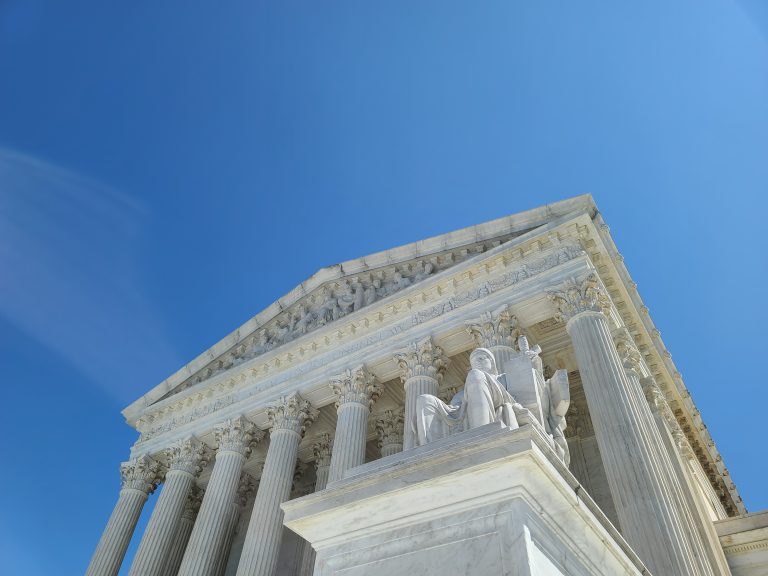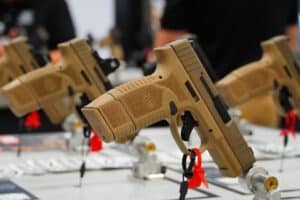The Supreme Court’s decision in New York State Rifle and Pistol Association v. Bruen has already had wide-reaching consequences. And that shouldn’t come as a surprise.
On Wednesday, a revised paper published by Jake Charles, an associate professor at Pepperdine University, chronicled 31 Second Amendment claims that have been successful since Bruen was decided in June. That’s 31 more than the number of successful claims in the year after District of Columbia v. Heller. In fact, it took four years for the pro-gun litigants to achieve the same level of success after Heller.
But that’s to be expected because Bruen is, by and large, an explicit refutation of how lower courts had handled gun cases in the 14 years after Heller. The Court completely rejected the two-step analysis that had become the standard for judging gun laws in the more liberal circuits, which also happened to be where the most controversial laws exist. It held the first step of deciding if a law implicates the Second Amendment was acceptable, but not the second step of balancing the right against the asserted government interest in restricting it.
“Despite the popularity of this two-step approach, it is one step too many,” the Court ruled. “[Heller] and McDonald do not support applying means-end scrutiny in the Second Amendment context. Instead, the government must affirmatively prove that its firearms regulation is part of the historical tradition that delimits the outer bounds of the right to keep and bear arms.”
The majority then spent four pages going over how Heller should be properly understood. It is a detailed explanation of why the Court feels its ruling has not been given the deference it should have received.
“As the foregoing shows, Heller’s methodology centered on constitutional text and history,” the Court wrote. “Whether it came to defining the character of the right (individual or militia dependent), suggesting the outer limits of the right, or assessing the constitutionality of a particular regulation, Heller relied on text and history. It did not invoke any means-end test such as strict or intermediate scrutiny. Moreover, Heller and McDonald expressly rejected the application of any ‘judge-empowering ‘interest-balancing inquiry’ that ‘asks whether the statute burdens a protected interest in a way or to an extent that is out of proportion to the statute’s salutary effects upon other important governmental interests.'”
Justice Clarence Thomas, who penned the Bruen opinion, goes one step further by returning his oft-repeated critique of how lower courts treated the Second Amendment after Heller.
“The constitutional right to bear arms in public for self-defense is not ‘a second-class right, subject to an entirely different body of rules than the other Bill of Rights guarantees,'” the majority wrote. “We know of no other constitutional right that an individual may exercise only after demonstrating to government officers some special need. That is not how the First Amendment works when it comes to unpopular speech or the free exercise of religion. It is not how the Sixth Amendment works when it comes to a defendant’s right to confront the witnesses against him. And it is not how the Second Amendment works when it comes to public carry for self-defense.”
So, it would be more surprising if the lower courts responded to Bruen in the same muted way they did Heller and Mcdonald. That they’ve abandoned the two-step analysis that upheld nearly all gun laws and applying a text and tradition standard that’s far more perilous for modern restrictions is what anyone who read Bruen should have seen coming (regardless of how you feel about that outcome).
Of course, it wasn’t just the rebuke and explanation of Heller that made it happen. It also came down to the explicit adoption of that text and tradition standard. Heller and Mcdonald may well have hinted at a similar test, but Bruen actually spelled it out. That surely had a strong effect as well, especially on the district courts that have delivered most of the wins thus far.
It’s easier to default to an explicit test laid out by the Court than try to piece one together from rulings that don’t spell things out on how future cases should be decided. That taken together with the dressing down by the Court, explain pretty well why 14.6 percent of post-Bruen claims have succeeded while fewer than ten percent did after Heller, according to Charles.
Perhaps more interesting than the number of cases decided in favor of pro-gun plaintiffs is which claims have had success. And which haven’t. At least, not yet.
Challenges over carry licensing and defaulting private property to off limits for gun carry have a 100 percent success rate thus far. Cases against age restrictions, homemade gun bans, and gun-free zones have won about half the time. But claims against the National Firearms Act, commercial regulations, unlawful gun use, sentence enhancements, and bail conditions have been duds.
Some of that is to be expected too, since Bruen directly dealt with gun-carry licensing and sensitive places restrictions. But it’s interesting to see how little progress there has been on things like non-violent felon gun prohibitions. Those were gaining steam before Bruen but haven’t had any success thus far in its wake.
Perhaps, that will change as Bruen’s effect picks up steam. Or, perhaps, the momentum of pro-gun litigators will stall as it crashes up against the formidable stony shores of the Ninth or Second Circuit Court of Appeals. Those were the laboratories of law in which the now-defunct two-step test was created after all.
The Supreme Court’s prolonged inaction after that trend began is what let it take hold. The only thing that could stop it from happening again should those circuits decide to take that route is the Supreme Court stepping in far sooner than last time. As much as gun-rights advocates have gotten off to a fast start in the post-Bruen era, the fight over the Second Amendment is a marathon–not a sprint.






